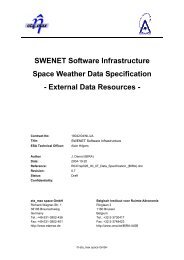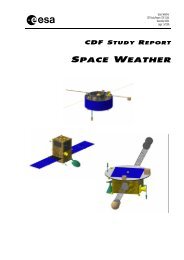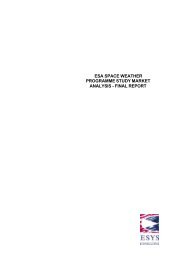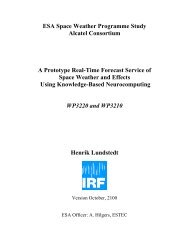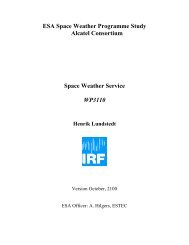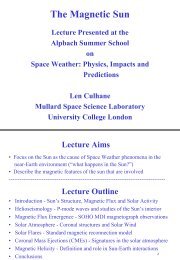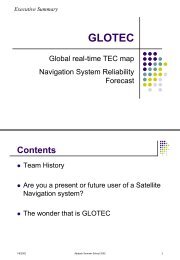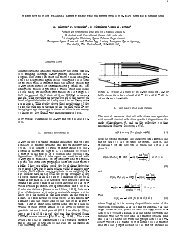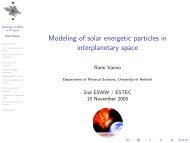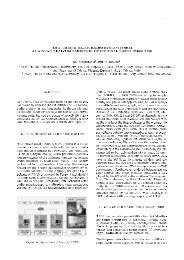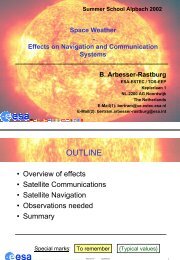Global Monitoring of the Terrestrial Ring Current - ESA Space ...
Global Monitoring of the Terrestrial Ring Current - ESA Space ...
Global Monitoring of the Terrestrial Ring Current - ESA Space ...
Create successful ePaper yourself
Turn your PDF publications into a flip-book with our unique Google optimized e-Paper software.
[Ebihara and Ejiri, JGR,105, 15843, 2000]<br />
Following Cladis and Francis [JGR, 90, 3465, 1985],<br />
<strong>the</strong> spatial and temporal evolution <strong>of</strong> phase space density is<br />
solved by tracing <strong>the</strong> bounced-averaged drift trajectories <strong>of</strong><br />
packet particles which carry <strong>the</strong> number <strong>of</strong> real particles in a<br />
phase space bin.<br />
A trajectory <strong>of</strong> an ion is taken to be representative <strong>of</strong><br />
a bundle <strong>of</strong> ions originating in <strong>the</strong> phase space element. If<br />
<strong>the</strong> trajectory intersects one <strong>of</strong> <strong>the</strong> phase space bins, <strong>the</strong><br />
number <strong>of</strong> ions is added to that bin. The phase space<br />
density is obtained by summing <strong>the</strong> ions that enter in <strong>the</strong><br />
field phase space bins from all <strong>the</strong> phase space elements <strong>of</strong><br />
<strong>the</strong> source and dividing by <strong>the</strong> phase space volume.<br />
Alpbach Summer School, 2002<br />
[Ebihara and Ejiri, JGR,105, 15843, 2000]<br />
Model inputs<br />
H +<br />
At: L= 10 , 2100



